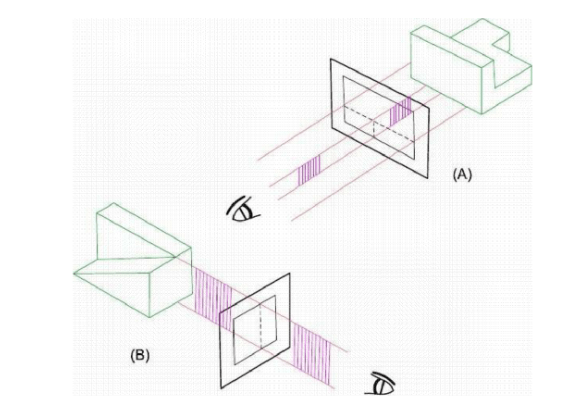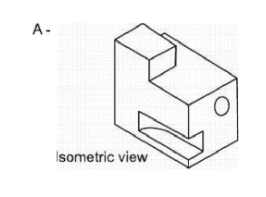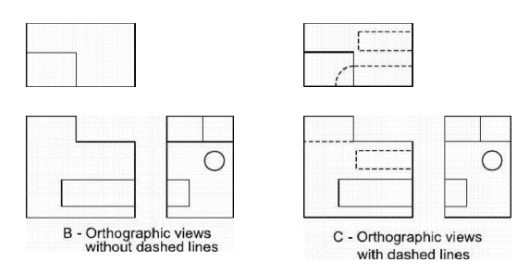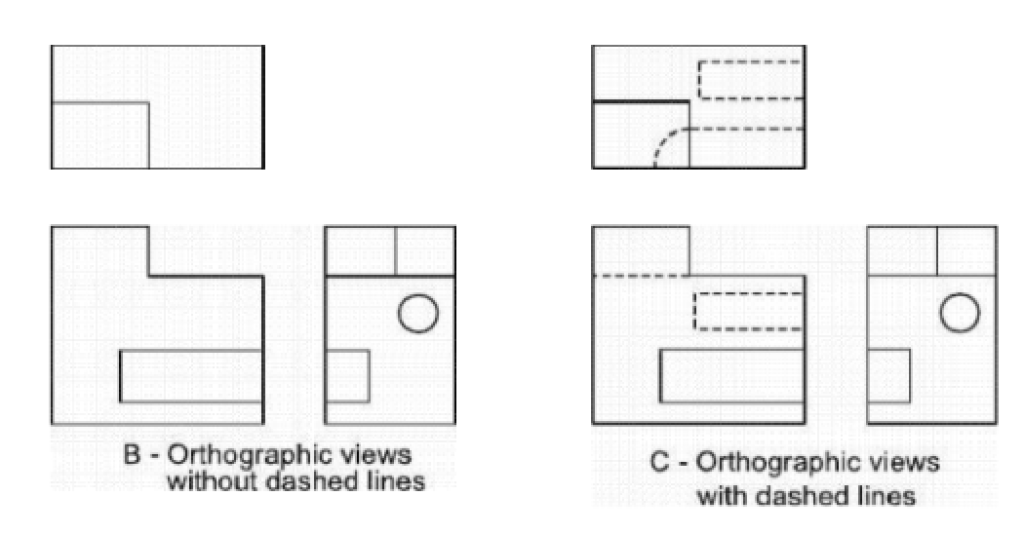HIDDEN FEATURES
To describe n object completely, a drawing must contain lines representing all the edges, intersections and surface limits of the object whether these are visible to the observer from a particular direction or not. The hidden edges, intersections and surface limits must always be indicated by dashed lines as in Fig. 3.11. When a dashed line is to start independently, it must start from a dash, however, a gap is provided at the start when the dashed line is in continuation of a full line.
In Fig. 12, there are three features added to a simple solid rectangular block, a raised
rectangular head, a slot on the front and a drill starting from the right side


penetrating upto half the length: In part-B of the figure, three orthographic views without dashed lines are shown. Curvature of the slot on the left and depth of the drill are not indicated in any of the views. If we add dashed lines, as in C-part of the figure, we may also show these missing dimensions.
Dashed lines for the slot in the top view indicate “depth” of the slot from the front side.
Towards the left, in the top view, the dashed line starts coming closer to the lower end
indicating that the “depth”, as seen from the front, is decreasing gradually.


Fig. 3.12 Importance of Hidden Features


